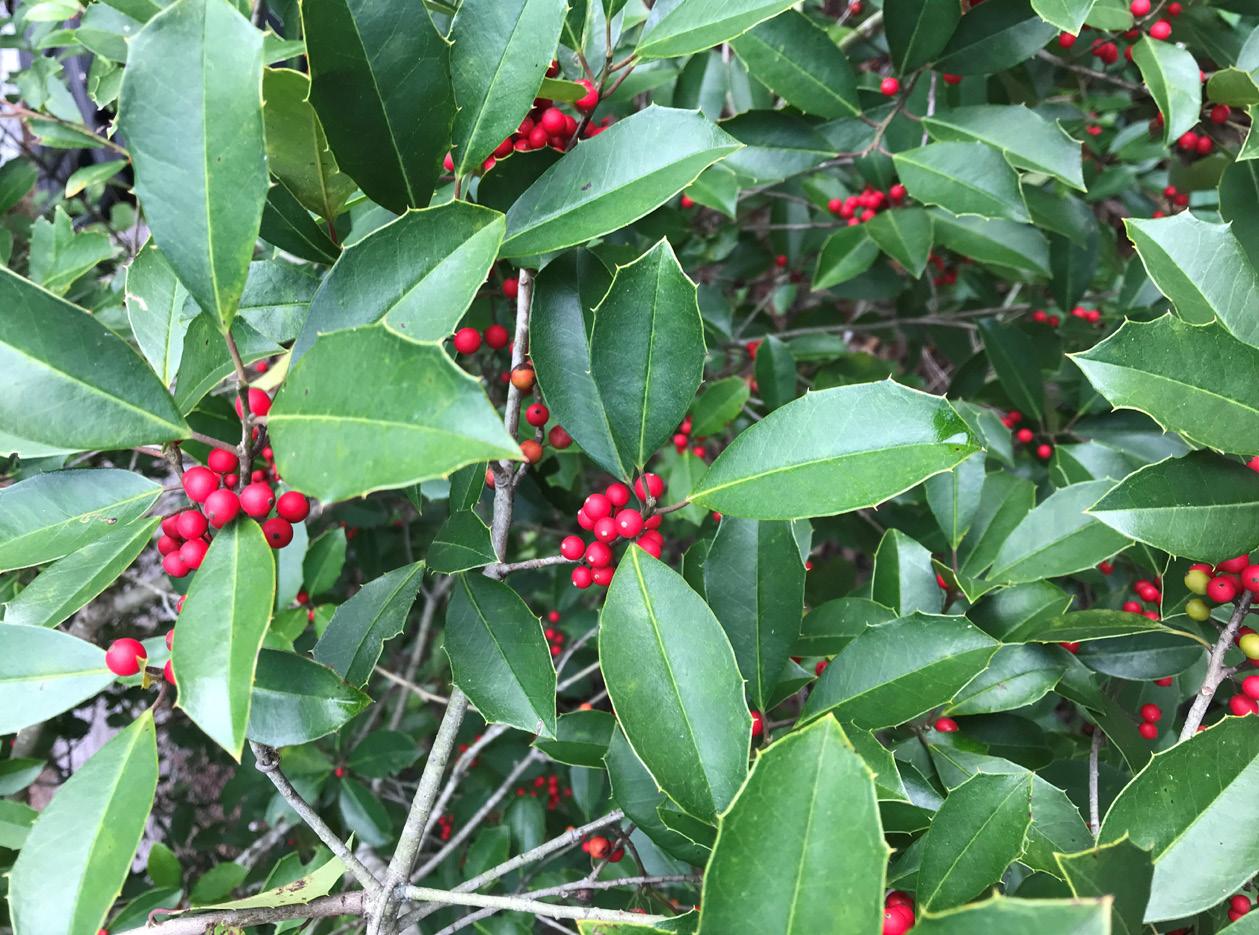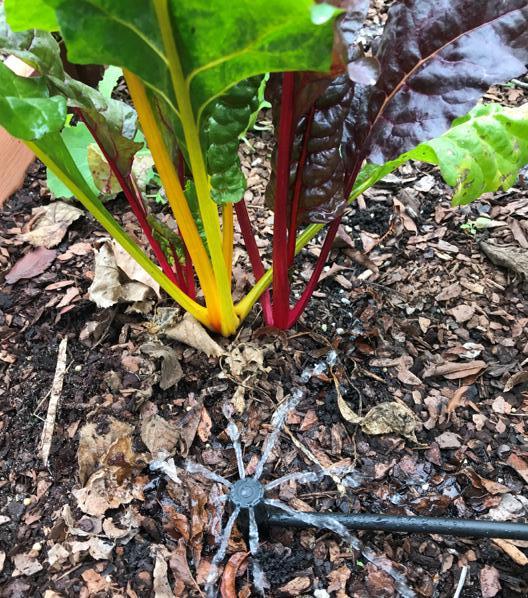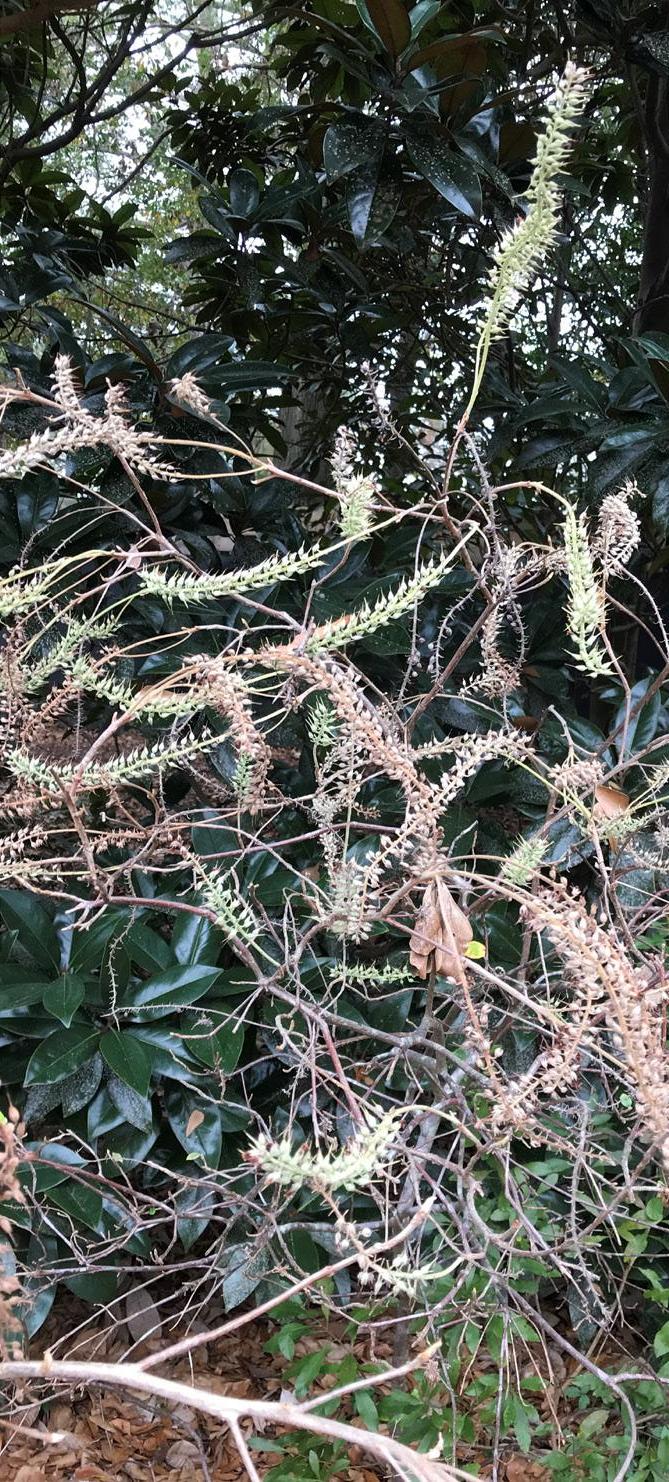
7 minute read
Written by Lazar Brown Oglesby
Peas & Greens for a Prosperous New Year!
WRITTEN BY LAZAR BROWN OGLESBY PHOTOGRAPHY BY DILLON & CAROLINE FIELDS
Nothing is more pleasing on a cold winter evening than a hearty pot of soup cooking on the stove. The smells and sounds of the trinity simmering in butter or bacon grease are comforting for all the senses. My favorite Le Creuset Dutch-oven is a permanent fixture on my stove during the winter months. I can’t wait to arrive home and create a one pot meal for my family and there is usually enough to share with friends.
One of the most requested dishes for Honey Catering is black eye peas and greens. People are surprised and pleased at the unique flavor and perfect pairing of two beloved Southern staples. My favorite part of this dish is the “pot liquor,” the stock which results from the cooked greens and peas. Sopping the rich broth with cornbread or crusty French bread is heartily satisfying. I was determined to create a recipe that turned this unique dish into an easy and healthy soup. The colors are beautiful, and the depth of flavor is surprising.
Most of my recipes will feed an army. It’s hard for me to cook just a little pot of anything. One of the great things about soup is it freezes beautifully. If you have a busy week or don’t have time to prepare a big meal, it’s easy to grab some soup from the freezer. Pair the soup with a fresh salad and garlic bread and you have a delicious, homemade meal.
Jiffy® cornbread is the obvious choice to serve with your quintessential Southern soup made with black eyed peas and greens. Did you know your favorite baking mix is made in Michigan? I though only a Southerner could produce a cornbread so moist and delicious. I know some folks are weird about adding too much sugary sweetness to a dinnertime staple, but Jiffy doubles as bread and dessert! I like to “doctor” boxed mixes and use them to make fun, new recipes. With the simple addition of a sweet potato, Jiffy® cornbread turns into an even sweeter treat!
Though I don’t normally adhere to superstitions, I do strictly abide by the New Year’s Day traditional meal: greens for folding money, black eyed peas for coins, pork for progress, and cornbread for gold. The recipes below will cover all the bases for a prosperous New Year! S
INGREDIENTS:
1 box Jiffy® Cornbread mix 1 small Sweet Potato 1 Egg ⅓ c. Milk 3 Tbsp. Butter 3 Tbsp. Sugar Dash Cinnamon
PREPARATION:
Bake sweet potato until tender and cool. Peel the potato and mash until smooth. Prepare cornbread using box directions. Add sweet potato before mixing. Mix until just combined. Pour into greased baking dish. Pour melted butter over the top and sprinkle with cinnamon and sugar. Bake at 400° for 15-20 minutes. Serve warm with butter.
PECAN PRALINE BUTTER
INGREDIENTS:
1 stick Butter (softened) ¼ c. Pecans (roasted and salted) 2 Tbsp. Brown Sugar 1 tsp. Vanilla
PREPARATION:
Place all ingredients in a bowl and whip until combined. Refrigerate any leftovers.
NEW YEAR’S DAY SOUP
INGREDIENTS:
3 Tbsp. Butter 1 c. Ham (cubed) 1 lb. Smoked Sausage (sliced) ½ c. Onion (diced) ½ c. Bell Pepper (diced) ½ c. Celery (diced) 64 oz. Chicken Broth 3-4 c. Chopped Greens (collards, mustards, kale, or any leafy green) 2 cans Black Eye Peas 2 cans Diced Tomatoes with Garlic 1/3 c. Apple Cider Vinegar 1/3 c. Ketchup 2 Tbsp. Hot Sauce ¼ c. Corn Starch Salt and Pepper to Taste
PREPARATION:
Melt butter in heavy bottomed pot or Dutch oven. Sauté ham, sausage, onion, bell pepper, and celery in butter until veggies are tender. Add the stock and bring to a boil. Taste stock and add salt and pepper to taste. Add washed and trimmed greens to the pot and cook until tender. Drain and rinse black eye peas. Add peas, vinegar, ketchup, and hot sauce. Simmer for 15-20 minutes. Mix ¼ c. cold water and cornstarch and stir to form a paste. Add paste to simmering soup to thicken. You may add an additional recipe of cornstarch if you prefer your soup to be thicker. Serve hot with cornbread.
Winter Beauty - Holly

Irrigation helps provide consistent watering.

Simple Resolutions for a Happy (Plant) Year
WRITTEN BY CAROLYN ALTMAN
1. BE CONSISTENT.
Water on a regular schedule, based on a plant’s needs. This applies to both indoor and outdoor plants, from the smallest pansy to shrubs and trees. When consulted about a plant that is not doing well, the first thing a plant professional will ask is whether the plant received regular water, since the most common threat to plant livelihood is neglect. If the answer is yes, then the plant professional shifts to the second most common threat: overwatering. Yes, a person can love his or her plant too much. Most plants like soil that will slow water down long enough for the plant’s roots to absorb some, but not so dense that
it traps water. Heavy soil holds too much water, and the roots will eventually rot, leading to the death of the plant. Pots or holes without good drainage have the same effect. Make it easy on yourself and learn where your plant grows naturally. A desert plant needs less frequent watering than a rainforest fern, for example. You are heaven and earth for your plant, whether it’s in your house or yard, and you will need to rain and drain accordingly, all year long.
2. BE SENSITIVE AND INFORMED.
In a daily miracle of science, plants make food from the sun. All life on earth, including our own, depends on this amazing process. Everything you eat can be traced back to a plant. Same with the air you breathe. The plants that keep you alive need sunlight to survive. Some need hours of direct, bright sun, and others are happy to live on more diffused light in the understory, protected from intense rays. Many houseplants are tropical understory plants, which is why they are able to survive inside our houses. Be honest about your daylight and choose plants that match the sun you have available. Plants are definitely decorative, but you don’t want to slowly starve yours to death just because it looks good in a dark corner when you first park it there. By the way, plant “food” is not a substitute for full spectrum sunlight. Plant food, really fertilizer, replaces minerals and nutrients that wash out of soil through repeated watering. It does not supply the sugars plants need to make from the sun.
3. DISCIPLINE APPROPRIATELY.
For major structural pruning, the right time of year is when the plant has pulled its life forces deep into itself and is dormant, not spending valuable energy on flower and fruit production. That way, when you prune off a part, the plant can spend some energy sealing off the wound, which protects it from systemic invasion by disease. Many shrubs, such as azaleas, are best pruned immediately after blooming, before they produce the flower buds for next year. Woe to the gardener who shears their azalea hedge all summer and then wonders why it doesn’t bloom the following spring. Do a little research on your specific plant before pruning. Winter is a good time to make a list and a schedule.

4. BE MERCIFUL AND PATIENT.
Whether it is a sharp pair of hand pruners or a newly oiled chainsaw, tools can get the better of even the most disciplined gardener, and what starts out as cutting back a wayward branch can result in a massacre. Put yourself in your plant’s shoes. How many limbs could you afford to lose at once? Keep in mind that the plant needs the limb and the leaves it grows to feed itself, and if you cut too much off or cut it back too far it will either die or burst forth in a desperate attempt at survival. Avoid the temptation to shape a plant all at once, and make it a multi-year process. Also, leave the healing tissue on the plant. Never cut back all the way to the stem. Leave the branch collar where the branch attaches to the stem, or trunk. The plant needs that material to heal.
5. OPEN YOUR HEART.
Sure, colorful summer flowers are grand. But take the time to enjoy your plants year round. Appreciate the structure of a tree or the rustle of dried grass plumes in the wind. Seek out the scent of witch hazel or edgeworthia. Nature has daily delights, if one takes the time to notice. S


